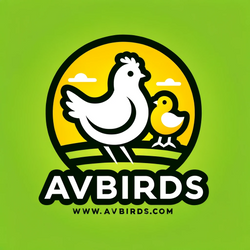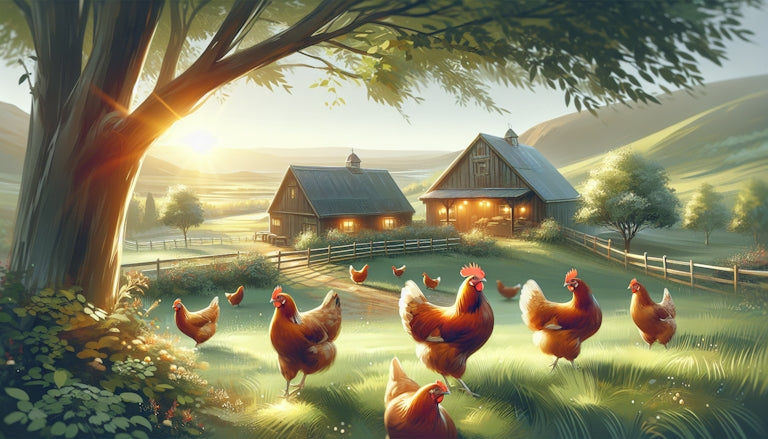Whether you’re new to backyard flocks or expanding your coop, brown egg layers for sale offer a reliable way to get farm-fresh eggs with that classic, earthy shell color. You’ll find breeds ranging from hearty Rhode Island Reds to colorful Easter Eggers, all promising around six eggs per week once they start laying at about six months old (University of Minnesota Extension). In this guide, you’ll discover top breeds, ordering tips, coop prep ideas, and feeding know-how so your hens stay happy and productive.
Choosing Brown Layers
Picking brown-shelled egg producers is about more than looks. Here’s why so many flock owners lean into these friendly layers:
- Dual-purpose appeal: Many brown layers, like Buff Orpingtons and Barred Rocks, pull double duty—great eggs and tasty meat.
- Hardy temperament: Breeds such as Black Australorps and Rhode Island Reds tolerate cold weather well and adjust easily to free-range setups.
- Steady production: Expect about six eggs per hen each week at peak laying (first two years) and continued output for 5–10 years.
- Broad availability: You’ll find everything from day-old chicks for sale to started pullets for sale with minimal order sizes.
Ready to match a breed to your needs? Let’s dive into the most popular brown egg layers.
Popular Brown Breeds
Below is a quick comparison of six tried-and-true brown layers for backyard flocks.
| Breed | Eggs/Week | Temperament | Best For |
|---|---|---|---|
| Rhode Island Red | 5–6 | Curious, hardy | Beginners, dual-purpose |
| Barred Rock | 4–5 | Friendly, calm | Families, free-range |
| Buff Orpington | 4–5 | Docile, broody | Pet flocks, meat birds |
| Black Australorp | 5–6 | Quiet, cold-tough | Small farms, beginner flocks |
| Easter Egger | 4–5 | Chatty, colorful | Novelty eggs, kids’ flocks |
| Ameraucana | 4–5 | Playful, alert | Blue-green egg fans |
Quick Breed Highlights
- Rhode Island Red chicks have powered countless commercial hybrids, making them reliable layers and good meat birds.
- Barred Rock chicks sport striking black-and-white stripes and adapt well to confinement or free-range life.
- Buff Orpington chicks are fluffy, gentle giants that handle family noise and kids without flinching.
- Black Australorp chicks originated in Australia for top egg output and chill weather performance.
- Easter Egger chicks lay eggs from olive green to pale blue—perfect if you love variety.
- Ameraucana chicks produce consistently blue eggs and boast a quirky beard and muffs.
Ordering Your Chicks
You’ve pinned down a few breeds—now it’s time to order. Hatcheries typically offer these options:
Day-Old Chicks
- Widest breed selection, including sex-linked hatchery choice chicks at low minimums.
- Arrive super tiny (under a week old), so you’ll need a brooder setup right away.
- Cheapest per chick, but you’ll invest more in heat lamps and starter feed.
Started Pullets
- Pullets are 14–18 weeks old, just shy of laying age.
- They require less early-life care—no brooder needed.
- Faster egg payoff, though cost per bird is higher.
Specialty Options
- Bantam chickens for sale if you’re tight on space or love petite breeds.
- Rare chicken breeds for sale like Welsummers or Swedish Isbar for a unique flock.
- Minimum order chicks to try just a pair or three without breaking the bank.
Whichever you choose, order between January and September for Feb–Sept shipping windows (Cackle Hatchery).
Preparing Your Coop
Before your chicks or pullets arrive, get their home ready:
Brooder Setup
- Heat source: Use a 250W lamp or safe brooder plate, aiming for 95°F under the lamp in week one, then lower by 5°F weekly.
- Bedding: Line the floor with pine shavings—avoid cedar, which can irritate lungs.
- Feed and water: Provide chick starter feed in a shallow feeder and a nipple or low-lined waterer.
Coop Essentials
- Perches: Install roosts 12–18 inches off the ground, spaced 8–12 inches apart for adult birds.
- Nest boxes: One box per four hens, corner-mounted at floor level. Line with straw or wood shavings.
- Predator proofing: Secure mesh, bury wire at least 12 inches deep, and lock doors at night.
For pullets, you can skip the brooder and move them straight into a clean, draft-free coop.
Feeding Your Hens
Nutrition and lighting are key to happy layers.
Nutrition Needs
- Starter/Grower feed until 16 weeks, then switch to 16–18% protein layer feed.
- Offer oyster shell or crushed limestone free choice for strong shells.
- Fresh water: Replace daily, add electrolytes if birds show stress or after shipping.
Lighting Tips
- Hens need 14–16 hours of light per day for consistent lay. Use a timer on a low-watt bulb during short winter days.
- Avoid sudden light changes—they can trigger molt or laying pauses.
Final Key Takeaways
- Brown egg layers deliver dependable egg yields, hardy temperaments, and lovely shell hues.
- Compare breeds by production rate, personality, and dual-purpose potential using the table above.
- Choose between day-old chicks or started pullets based on your time and setup.
- Prep a safe brooder and coop with proper heat, bedding, perches, and nest boxes.
- Feed balanced starter and layer rations, plus calcium supplements and consistent lighting.
Go ahead—pick your favorite brown layers, place that order, and get ready to collect your first basket of warm eggs. Have questions about a specific breed or brood setup? Drop them in the comments so everyone can learn.

